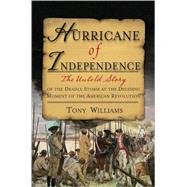
| Author to Reader | p. ix |
| Prologue: The Storm of Revolution | p. xv |
| Tempest Brewing | p. 1 |
| Impending Doom on the Outer Banks | p. 7 |
| First Strike: The Hurricane of Independence Roars Ashore | p. 19 |
| Norfolk: An Attack on Both Sides | p. 29 |
| Tobacco and Gunpowder | p. 51 |
| Landon Carter: Diarist and Planter-Philosopher of the Northern Neck | p. 61 |
| The Streets of Annapolis | p. 73 |
| Lightning and Enlightenment | p. 87 |
| The Colonies Unite in Philadelphia against British Tyranny | p. 103 |
| The Radical, the President, and the General in Philadelphia | p. 119 |
| Striking the Second Continental Congress | p. 131 |
| The Heroic Collegian: Hamilton in New York | p. 137 |
| Whither the Hurricane of Independence? | p. 161 |
| War Erupts | p. 171 |
| General Washington Battles the British and the Weather | p. 189 |
| Fishing for Cod during the Summer in Newfoundland | p. 207 |
| The Hurricane | p. 223 |
| Epilogue: The Providential American Victory | p. 239 |
| Endnotes | p. 243 |
| Bibliography | p. 273 |
| Index | p. 285 |
| Author Interview with Tony Williams | p. 295 |
| About the Author | p. 301 |
| Table of Contents provided by Ingram. All Rights Reserved. |
The New copy of this book will include any supplemental materials advertised. Please check the title of the book to determine if it should include any access cards, study guides, lab manuals, CDs, etc.
The Used, Rental and eBook copies of this book are not guaranteed to include any supplemental materials. Typically, only the book itself is included. This is true even if the title states it includes any access cards, study guides, lab manuals, CDs, etc.
Excerpted from Hurricane of Independence: The Untold Story of the Deadly Storm at the Deciding Moment of the American Revolution by Tony Williams
All rights reserved by the original copyright owners. Excerpts are provided for display purposes only and may not be reproduced, reprinted or distributed without the written permission of the publisher.